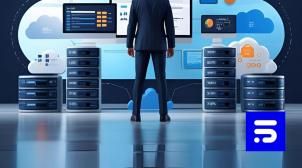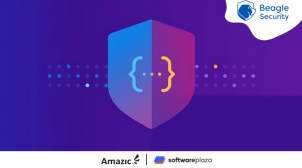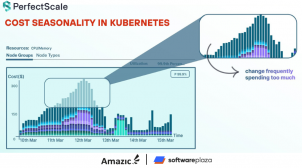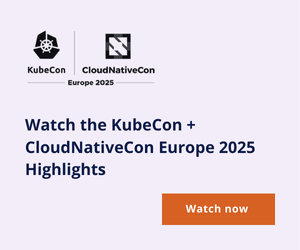Login to your Account
Create Affiliate Account
Trouble Signing In?
Enter your email below to request a Reset Password Link
-
Web Application Security Testing: 6 Essential Elements for 2025
Web application security testing is more critical than ever as enterprises face growing threats and regulatory demands. This article breaks down essential components of an effective testing program—defining scope, blending automated and manual tools, integrating into the SDLC, and prioritizing risk. Learn how modern approaches like ASPM, AI, and continuous monitoring can help security teams stay ahead of evolving vulnerabilities and protect enterprise applications.
-
Introducing Cloud Efficiency Posture Management (CEPM): An Evolution in Cloud Optimization
PointFive introduces a new approach to cloud cost management with Cloud Efficiency Posture Management (CEPM) — a discipline focused on optimizing cloud resource configuration, scaling, and architecture. Unlike traditional FinOps tools that emphasize spend visibility and discounts, CEPM continuously identifies root causes of inefficiency, delivers actionable insights, and embeds optimization into engineering workflows. From misconfigured DynamoDB tables to inefficient Aurora storage settings, PointFive helps teams move beyond surface-level cost savings to drive sustained performance, reliability, and cloud efficiency at scale.
-
PostgreSQL® extensions you need to know in 2025
Uncover the pivotal role of PostgreSQL's extensions ecosystem, its historical context, and why it remains indispensable for modern data needs, including AI and analytics. Dive into key extensions like TimescaleDB, PostGIS, and pgvector, and learn how a managed service, like Aiven, mitigates risks and enhances reliability.
-
Rails debug mode enabled
Uncover the critical security risks of running Ruby on Rails in development mode on a live server, from exposing internal workings and sensitive information to increasing the risk of remote code execution and DoS attacks. Learn practical steps to safeguard your application and prevent these vulnerabilities.
-
How to store and secure sensitive data in web applications
Given the surge in web application data breaches, learn how to effectively store and secure sensitive data in your web applications. This article explores critical data types, client-side and server-side storage mechanisms, common OWASP Top 10 vulnerabilities, and essential protective measures like robust authentication, access control, and encryption strategies.
-
Master API security: Securing your entire API ecosystem with Beagle Security’s API discovery
Discover how unchecked API sprawl creates critical security blind spots for fast-growing fintech startups, leading to data breaches and operational inefficiencies. Learn how Beagle Security's API discovery feature automatically uncovers and tests all APIs within Kubernetes or Istio environments, ensuring complete visibility and proactive vulnerability management.
-
How much does pen testing cost (2025)
Explore the true costs of penetration testing in 2025, breaking down pricing by scope (web, mobile, API, cloud, network, IoT) and methodology (black box, grey box, white box). Discover key factors influencing costs and learn how AI-powered solutions like Beagle Security offer a faster, more affordable alternative to traditional pen tests.
-
FinOps in 2025: The 6 Phases of FinOps Evolution
Explore the six evolving phases of FinOps, from the initial "Observational" data collection to "Automated" and the future of "Integrated FinOps," revealing how organizations learn to manage cloud spend and optimize infrastructure efficiently over time.
-
Understanding Cost Seasonality in Kubernetes
Unpack the concept of cost seasonality in Kubernetes, explore the factors that drive its fluctuations, and discover effective strategies—including right-sizing, autoscaling optimization, and leveraging tools like PerfectScale—to manage and predict your cloud spend while maintaining performance.
-
Enterprise Open Source AI: Navigating Risk, Securing Innovation, and Owning Your Destiny
As AI adoption surges across industries, organizations face critical decisions about how to manage innovation, risk, and control. Open source AI offers enterprises the ability to “own their destiny” — providing transparency, flexibility, and customization that proprietary models often lack. However, with these benefits come challenges: security vulnerabilities, model drift, and cultural shifts in AI literacy. To succeed, businesses must build secure infrastructure, foster cross-functional collaboration, and establish governance pathways that empower safe innovation. The future belongs to cybernetic businesses — and those that proactively shape their AI strategies today will lead tomorrow.
-
Navigating the Evolving AI Landscape How Anaconda is Reshaping Data Science and Machine Learning Platforms
The data science and machine learning (DSML) landscape is exploding with innovation, but it's also bringing new complexities! Organizations are grappling with the critical need to manage intricate AI development lifecycles, ensure robust governance and security for open-source components, and scale deployments without a hitch. The article dives into how these escalating challenges demand more than just tools—they require comprehensive, secure, and flexible solutions to truly unleash AI's full potential! It's an exciting time, and the focus is squarely on building a trusted foundation for the future of AI.
-
Quick Start Environments: Simplifying AI Development for Practitioners
Skip setup hassles—Anaconda’s Quick Start Environments let data pros launch pre-built, conflict-free workspaces instantly and start building faster.



















